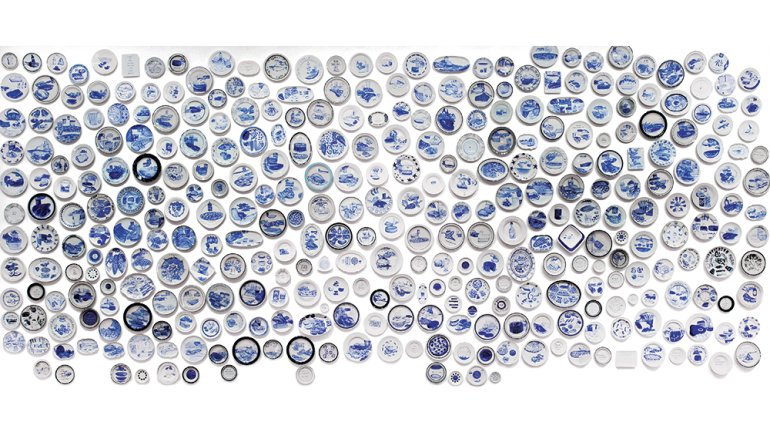Bearing Witness
Bearing Witness
In the late 1990s, a newspaper story caught Julie Green’s attention. It was about a death-row inmate, and, strikingly, included the particulars of his final meal. The artist started collecting clippings and sketching these meals, but her breakthrough came when she decided to paint one on a plate, the first of more than 500 she’s painted since. We spoke to Green, a fine arts professor at Oregon State University in Corvallis, about her enduring project.
Why did you start The Last Supper series?
My first tenure-track teaching job was at the University of Oklahoma, and Oklahoma has the highest per-capita death row executions. I read a story about a final meal, which happened to be six tacos, six glazed doughnuts, and a cherry Coke. And then this newspaper article went on to explain facial features of this inmate being executed and final words.
I wondered why that was in the paper. It was a very strange article to me, and I hadn’t heard about the final meals before – this was in the late 1990s. I suppose that meal humanized death row for me. As a kid growing up, I was in favor of capital punishment; my family is conservative, and that was my background. But in my early 20s, I stopped believing that it was a good system.
So that was the first plate that you did?
It was the first drawing that I did, and I believe it was the first plate. This great friend of mine down the street, Deborah Brackenbury, was doing photo transfers, working on plates. I thought, “Plates – perfect.”
I tried other things. I tried embroidering six tacos on napkins. It takes a really long time to do that.
So when I came to Oregon, the first phone call I made, before I even called my mom, I looked up mineral painting, which is traditionally used for decorative china, and spoke with ceramic artist Toni Acock, who’s become my technical advisor and fires all the plates.
The first plate was in color, and it wasn’t very successful for many reasons. My application was too thin, so it was not well defined. And without proper ventilation, one can’t safely fire heavy metals like cadmium red. Mineral paints, then, are not practical in all colors. And safer colors, such as mauve or brick-red, won’t do for ketchup. So I decided to select one color for The Last Supper. I had to make them monochromatic.
Why did you choose to paint in blue?
We grew up with blue and white china in the home; it’s common in many cultures. It’s such a beautiful combination. When I realized I was going to do multiples and work on the project for a while, there’s such a heaviness to the subject matter, and blue is such a beautiful color; it can kind of balance the darkness of the piece.
Why aren’t there inmates’ names on the plates?
That’s sort of a hard one to explain. I think that when I first saw the meals, my reaction was “Why is this in the paper, and why do we need to know about this person’s eyes closed to a crescent?” Who wants to know that? I was shocked that it was so personal, but I understand that terrible crimes have been committed to put somebody on death row. I do have it in my records, but I don’t print it.
When I took on the series, I’m not really pointing to the inmate specifically, I’m pointing to our system. I think that there is a need to have the state listed. It’s quite interesting if you were to see the large numbers of people executed in Texas, Virginia, and Oklahoma, versus none in Minnesota, two in Oregon. It gives us an overview of United States capital punishment.
Can you tell me about your newest series of works?
I’ve done five of the sets, as they’re called, where there’s a painting and a plate that matches. The idea is that the plate is right in front of the painting and obscures it. And I can see that I have another dozen ideas for that set project right in my head that I’m really anxious to get to. I think that’s on a lot of peoples’ minds, how we define and value art.
The hierarchy in Western art viewing, the fact that some things are more special because of the medium, is absurd to me. I’m 52, I have a shaved head; I wear lipstick and pearls. I think that contradictions inspire me.
Julie Green’s newest work will be shown at Laura Russo Gallery in Portland, Oregon, in August. Andrew Zoellner is American Craft’s assistant editor.

